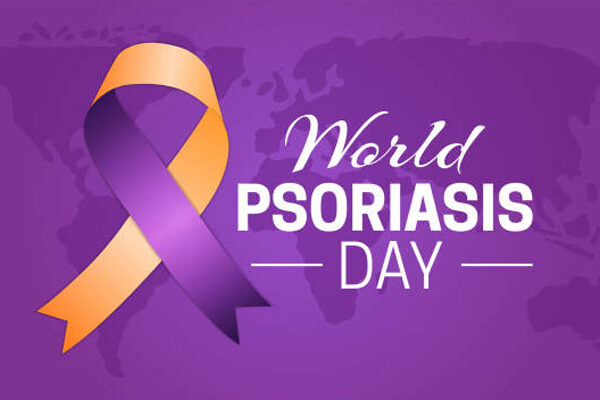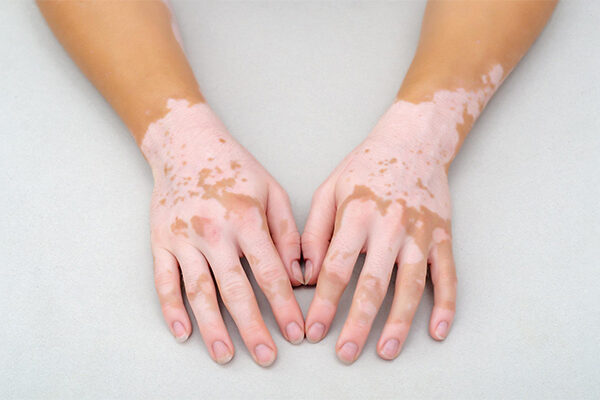Updated on August 1, 2025
Ankle Rash – Introduction
Itchy ankles or ankle rash is a common dermatological issue, often prevalent in summer. Caused by parasites, it leads to symptoms like itching and rash, potentially resulting in dermatitis on the feet. Common culprits include fungal infections like athlete’s foot, jock itch, and yeast infections. Other causes encompass contact dermatitis, eczema, infections, and conditions like psoriasis. While the rash often resolves on its own, it highlights a range of factors, from parasitic infections to inflammatory skin conditions, contributing to ankle discomfort.
Itching (medical term: pruritus) can happen anywhere on the body where the skin comes into contact with an irritant or itself. The ankles are one of the most common areas where one can experience itching. A rash on ankles can result from itchy ankles or vice versa.
Most pruritus go away on their own without needing medical attention. Sometimes, however, itchy ankles can be a sign of serious underlying conditions. Find out more about itchy ankles and rashes on ankles in this blog.
Causes of Itchy Ankles and Ankle Rash Symptoms
The cause of itchy ankles can range from simple allergic reactions to autoimmune disorders. There could be multiple causes of a rash on ankles or itchy ankles some of which are listed below:
Contact Dermatitis
Contact dermatitis can result from an allergic reaction but more commonly as a reaction to a skin irritant. Different substances can result in contact dermatitis but some of the most common ones are:
- Dyes and perfumes
- Poison ivy, oak, or sumac
- Fabrics
- Rubber
- Topical antibiotics
- Metals
The main symptom is usually a rash (or a rash on ankles), but there are other manifestations as well:
- Blisters
- Hives
- Ulcers
- Swelling
Hives
Hives are red or pink-colored bumps that can appear as a rash on ankles on the skin due to certain food, medications, or other triggers. The usual presentation of a hive is raised, red, and swollen welts.
If your ankle is red, rough, or swollen-hives might be the source. Hives usually disappear on their own, but one should seek immediate attention if they see them spread quickly to the rest of the body.
Allergies
Allergies are common after physical contact with an allergen or having an insect bite. An allergen can be any foreign object the body reacts to. It can also be aggravated upon ingesting food or medications to which a person may be allergic.
An allergen can cause itchy ankles with redness or possibly a rash on ankles. Some allergic reactions give white flaky skin, which renders the need to get tests for autoimmune disorders. If a rash progresses rapidly, one should immediately call an emergency helpline.
Sunburn
If an itchy ankle is accompanied by warmth, rash on ankles, and redness, especially after prolonged sun exposure, it may be due to sunburns. In extreme cases, one could even develop blisters and a fever.
Liver Problems
Liver disease can lead to itching all over the body, including ankles, due to the buildup of bile in the bloodstream. Bile is a green-colored substance produced in the liver and stored in the gall bladder. It is released in the digestive tract to digest fats. When the liver does not function properly, bile can build up in the blood leading to itchy ankles. The palms and soles of the feet usually itch when someone has liver problems. Other symptoms of liver problems are:
- Jaundiced skin
- Abdominal pain and swelling
- Dark urine
- Pale stools
- Chronic fatigue
- Nausea
- Vomiting
- Loss of appetite
- Tendency to bruise easily
Diabetes
Diabetes is when the sugar in the blood does not go into the organs and instead remains in the blood. High blood sugar causes itching, but complications like neuropathy can lead to more itching. If someone suffers from long-term ankle itching, it is a good idea to get blood sugar evaluated.
Psoriasis
Psoriasis is an autoimmune condition that can cause itchy ankles. It happens when the body starts producing too many cells resulting in scaly red skin. The list of symptoms for psoriasis are:
- Silver-white scales on reddish skin patches (plaque psoriasis)
- Itchiness
- Dry patches of skin
- Fissures
- Flakiness
- Small bumps
- Thickening of the skin
- Redness
It is important to get checked for psoriasis as it can lead to complications like psoriatic arthritis.
Revival Research Institute is conducting Psoriasis Clinical Trials that may help people with this condition.
Eczema
Eczema (also usually known as Atopic Dermatitis) is a highly prevalent condition that causes itchy ankles and rash on ankles, affecting 17% of the American population. It usually causes redness, dryness, and itchy skin.
Other symptoms include:
- Bumps
- Flakiness
- Dryness of the skin
Reducing stressful lifestyles and avoidance of chemical irritants and allergens can help with eczema. If these do not work, one should seek alternatives like Eczema (Atopic Dermatitis) Clinical Trials.
Cancer
Though rare, cancer, cancer treatments, and cancer medications can cause overall itching on the body. Cancers related to blood, lymphatic system, liver, kidney, and skin can especially cause itching in the body.
Fungal Infections
An athlete’s foot, a kind of ringworm fungal infection, is a common cause of itching ankles. Wearing tight-fitting clothes or socks for a prolonged period puts one at risk for this condition.
Other symptoms are:
- Redness
- Itching
- Peeling
- Burning
- Blisters and sore feet
Treatments for Rash On Ankles Or Itchy Ankles
There are a few precautions that one should take into consideration to avoid itchy ankles or rash on ankles. These are:
- Eating a balanced diet
- Avoiding sun exposure
- Regulating diabetes
- Regular exercise
- Regular moisturizing
- Avoiding allergens or irritants
At-home management may be able to help with itchy ankles:
- Avoid items that cause you to itch
- Moisturize
- Use creams or gels that help cool the skin
- Apply anti-itch cream
- Apply a cool, wet compress
- Reduce stress
The treatment of itchy ankles and rash on ankles usually depends on the underlying cause of itchiness, and your doctor may prescribe you different products based on your condition. These could be:
- Antihistamines or corticosteroids: for allergic reactions
- Anti-fungal creams: for fungal infections
- Anti-bacterial solutions: for bacterial infections
- Corticosteroids: for noninfectious inflammation
- Anti-itch creams: for generalized itchiness
What Is The Outlook For Itchy Ankles?
Itchy ankles and rash on ankles are generally minor problems that resolve on their own. Itchy ankles can be caused by irritants (such as cloth, rubber, or chemicals), allergens (such as pollen, poison ivy, or metals), skin diseases such as eczema and psoriasis, fungal infections, and immune system issues.
Antihistamines, anti-itch creams, keeping the region dry, moisturizing, taking oatmeal baths, and avoiding fragrances and other pollutants can all be used to treat itching ankles. Moreover, addressing an underlying health condition may also be necessary in the event of a long-lasting itch.
Once you determine the cause of the itchiness, you can seek appropriate treatment and begin your recovery with Revival Research Institute’s dermatology clinical trials.






